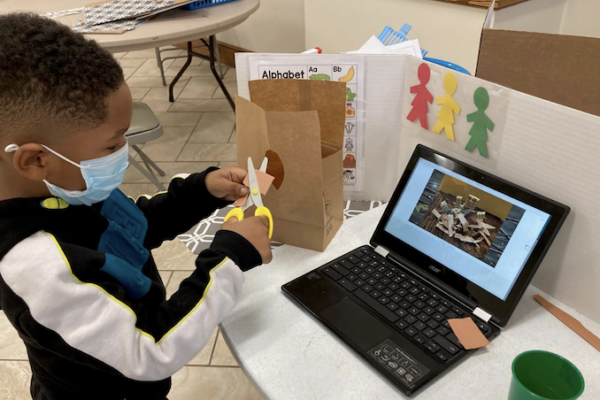We didn’t need Covid-19 to tell us that our education system wasn’t working for all students. It should not have been a surprise, then, that when schools went virtual, Black, Latino, low-income and immigrant students weren’t well served. Or that when distance learning proved to be suboptimal, affluent white parents opted for something different: learning pods.
News articles started circulating last summer about this growing solution to the challenges of distance learning, bringing together a small group of students with a teacher for a more personalized learning experience. But it seemed that this solution was only being pursued and created by families who had the resources to pay for them. There is no good translation for “micro schools” in Spanish.
At Latinos for Education we wanted to ensure that Black and Latino students have opportunities to participate in the innovation. We recognized early on that while many of us had the privilege of sitting comfortably in our homes doing remote work, many families in Boston had no choice but to go to work as essential employees or didn’t have adequate learning environments for their children. So we joined with other community organizations in Boston to find a solution.
In November, we launched 12 learning pods, called Community Learning Centers, in partnership with the YMCA of Greater Boston, Inquilinos Boricuas en Acción, and The BASE. The charge was simple—ensure kids of color get the instruction they need, while helping alleviate the concern, anxiety, and apprehension facing families by providing the support and services they need.
Our dozen centers serve up to 13 students each, within walking distance of their homes. These students are together every day from 8 a.m. to 5 p.m., forming their “equity pod.” They learn remotely from their school teacher, but also receive in-person academic support provided by tutors; enrichment programming like dance, music, theatre or physical activities like sports and/or yoga; healthy breakfast, lunch, and a snack; and a supportive social environment.
[Read More: How Schools are Colleges are Innovating During the Pandemic]
We focused on diversity by ensuring that teachers and leaders in the learning pods had the same racial and ethnic backgrounds as their students. In contrast, 47 percent of the nation’s students are Black, Latinx, or Asian while 80 percent of the public education workforce is White. Hiring educators and instructors with similar backgrounds is essential to building students’ self-esteem and modeling leadership for them.
While we used the Boston Public School curriculum, we also created culturally responsive supplemental materials to focus on whole child development, looking beyond academics to deal with social-emotional needs and emphasize their racial or ethnic identity. For example, students in the pods engage in various identity-development activities such as creating identity maps and self-portraits that highlight aspects of their race and culture they are proud of.
We’ve heard time and time again from parents that they feel the community learning centers are places where their child can not only learn, but also feel safe and seen. We’re seeing the impact on students, as grandparents and mothers tell us that their children want to come to the pods, and wake up excited each day in a way that they didn’t see before when they were attending traditional schooling.
Collaboration between learning-center staff and students’ school-based teachers has been important. Often, community organizations don’t have as strong of a relationship with students as their teachers might, but this model provides a way for schools, community groups and families to work together, communicate, and advance students’ education and social development.
It’s paying off. Teachers and parents alike tell us that the students participating in our equity pods are not just keeping up with their learning, but advancing significantly. This is telling at a time when our education system is allowing millions of students to experience significant gaps in learning. One of our learning pod staff members, Julia Rios, notes that two kindergarteners she is working with are thriving. She has received feedback from their parents and teachers at Blackstone Innovation School in Boston that these youngsters are keeping up with their work and advancing at an accelerated pace compared to their peers.
Importantly, our effort draws on the backing and resources of community organizations. We have not only put our own organizational resources behind this, we’ve put our trust in one another, coming together in true partnership. And we turned to the community—parents, guardians, and neighborhood-based organizations—to guide our thinking, point out the needs families have, and keep us accountable. Too often, community members are excluded from decisions regarding the education of students of color. As districts seek solutions to the academic impact of Covid-19, they should be turning to the community to co-design those solutions.
Encouragingly, our experience with the Community Learning Collaborative suggests that it can be a valuable model for ensuring that Black, Latino, and marginalized students receive the support they need even after the pandemic has passed.

